Plant Kingdom | Chapter 17 | 8th Science - Fungi | 8th Science : Chapter 17 : Plant Kingdom
Chapter: 8th Science : Chapter 17 : Plant Kingdom
Fungi
Fungi
Fungi (Singular – Fungus) belongs to
thallophyta. Its plant body is not differentiated into root, stem, and leaves.
The plant body of fungus consists of filament like structures called hyphae. Several hyphae are arranged in
the form of network called mycelium.
The cells of fungi are multicellular and eukaryotic. Some species of fungi like
yeast are unicellular and eukaryotic. Cell wall of fungi is made up of a
chemical substance called chitin.
The reserve food materials of fungi
are glycogen and oil. They have no starch because they have no chlorophyll
pigments. So, they are heterotrophs. Heterotrophs are of three types namely,
parasites, saprophytes and symbionts.
Some species of fungus live as parasites.
They absorb food from the living organisms with the help of special root called
haustoria. E.g. Cercospora personata.
It affects groundnut plants and cause Tikka disease.
The branch of study of
fungus is called mycology.
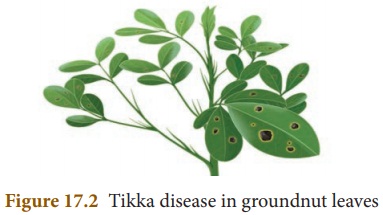
Some species of fungi live as
saprophytes. They grow upon the dead and decaying organic matters and get food
from them. E.g. Rhizopus.
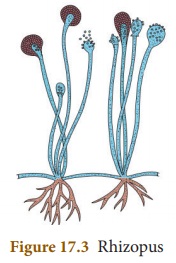
Some species of fungi are living
with algae and mutually benefitted. E.g. Lichen.
Some of them live symbiotically with higher plants in their roots called Mycorrhizae
Classification of Fungi
Fungi are classified into different
classes as given below
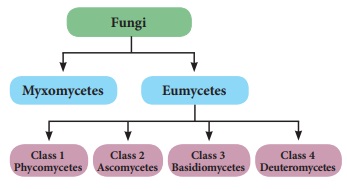
Economic importance of Fungi
Fungi are useful to us in many ways.
The importance of fungi are given below.
Antibiotic
Penicillin (Penicillium notatum) and Cephalosporin which cure different
diseases are obtained from fungi.
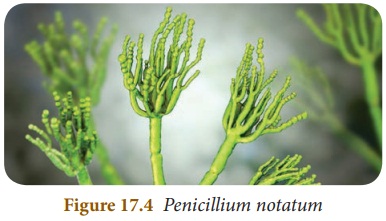
Food
Mushroom contains rich protein and
minerals. The most common edible mushroom is Agaricus (Button mushroom).
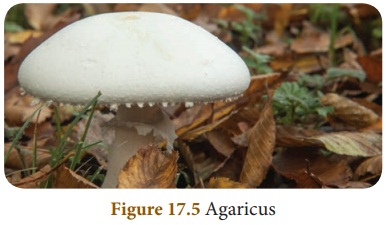
Vitamins
Fungus like Ashbya gospii and Eremothecium
goshbyii) are used to produce vitamin B2 (riboflavin).
Alcohol
Fungus like yeast contain enzymes
invertase and zymase, which ferment the sugar molasses into alcohol.
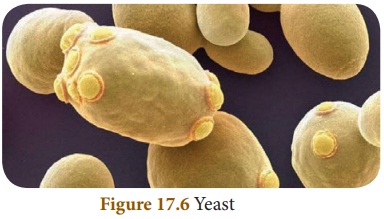
Harmful effects of Fungi
Fungi cause various diseases in
plants and animals. They are given in the tables below.
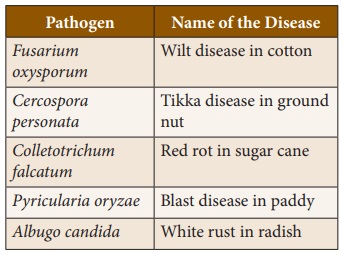
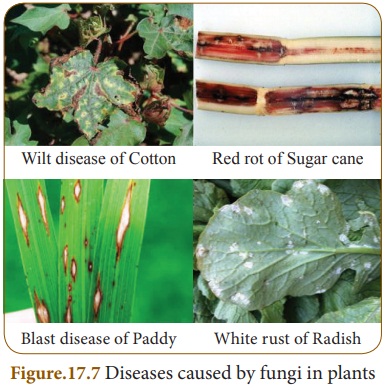
Info bits
Fungi are placed as third
kingdom in R.H. Wittekar’s five kingdom of classification because of absence of
chlorophyll and starch.
Activity 1
Take a piece of bread,
pour some water on it and cover it for four days. After four days place the
bread on a slide and observe it through microscope. What will you see? Name the
organisms which you see in the slide.
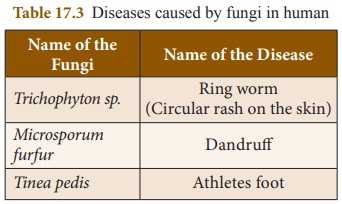
More to Know
Claviceps purpuriya is the hallucinogenic
fungi which causes greatest damages to the frustrated youth by giving unreal,
extraordinary lightness and hovering sensations.
Aspergillus species cause allergy
to children while Cladosporium protects against allergy.
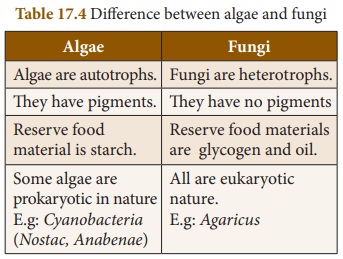
Penicillin is known as
Queen of Medicine. It was discovered by Sir Alexander Fleming in 1928.

Related Topics